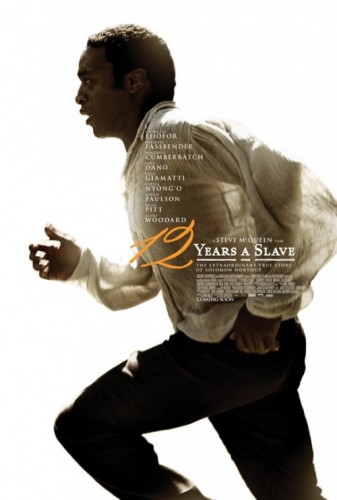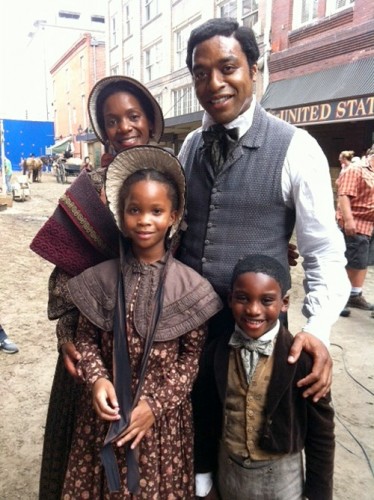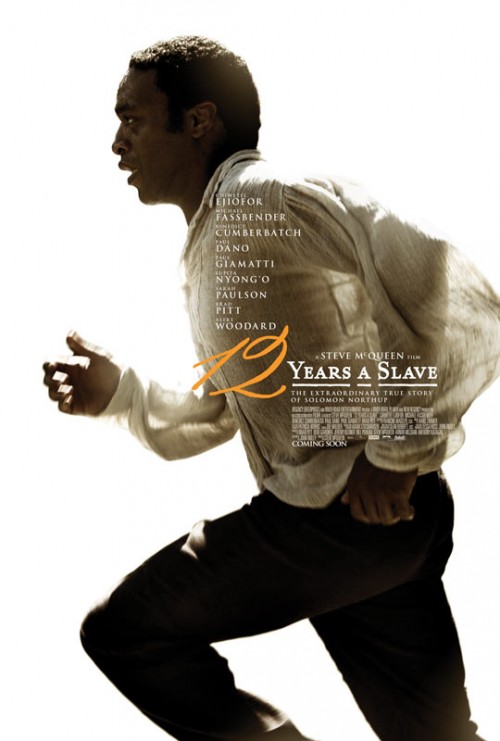
Written by Leigh Kolb
As we walked out of the theater from seeing 12 Years a Slave–still tear-stained and overwhelmed–a wealthy-looking white couple filed out behind us.
“That didn’t seem like 12 years,” the woman said.
“It seemed like it to me,” the man replied.
My husband and I discussed which comment was worse–hers, that seemed to diminish Solomon’s terrible journey, or his, that indicated the film was too boring or long.
I wondered what would have compelled this couple to come see this particular film. Awards buzz? Prestige? I don’t know, but I was both horrified and unsurprised at their reaction.
While I don’t imagine their response was shared by most, or even many, audience members, there was something about that retirement-aged white man in a crisp popped collar that made me seethe.
I think, more than anything, this couple represents the response of so many whites in the face of our brutal history.
Because our American history–built on slavery–is so frequently whitewashed, we are not confronted enough with our short-term memory loss and the privilege of not hearing or seeing the cruelties of our recent past.
White audiences rarely have to feel uncomfortable. We are typically the protagonists, the victors, the complex characters. Our stories are universal–or at least they’re marketed as such.
Hopefully, this is starting to change.
12 Years a Slave is the first time a slave narrative has been given the Hollywood treatment, which is almost unbelievable. The slave narrative at its very core is a hero’s journey, and the fact that filmmakers have not looked to these first-person accounts as screenplay material points to a much larger issue in our society.

White America is so deeply ignorant and/or ashamed of its history, these stories are pushed aside, relegated to African American Literature classes. These stories are otherized, even though they are our history.
12 Years a Slave–which will surely be nominated for and win its fair share of awards–is an amazing film. The acting and Steve McQueen’s directing are brilliant, the score is perfect, and its importance is poignant. It is interesting, though, that the director and most actors are not American (with the exception of Brad Pitt, who plays the good-guy Canadian who helps Solomon regain freedom). Chiwetel Ejiofor, who plays Solomon, is incredible. Michael Fassbender’s Edwin Epps is horrifying.
It’s difficult to see our white American selves as the enemy, and for black American directors, I can’t imagine the obstacles against telling those stories. (I’ll think there’s been some kind of real breakthrough when a Nat Turner film gets made for mass audiences.)

One of the powerful aspects of the film is its score. The first half of the film features Hans Zimmer’s punctuated horror music, which seems mildly out of place but also perfect, because we are watching a horror film. The vocal music we hear–painfully infectiously–is a white overseer singing “Run, N-gger, Run.” It fits well with the horror theme. This folk song, however, began as a song that slaves would sing, and then it was co-opted as a threat instead of a chant. At this point in the film, everything that Solomon had, that was his, is gone and has been sold.
Another perfect soundtrack choice during these scenes is when Bible verses and sermons are spoken as an abused slave is wailing, or the cruel overseer is spewing pejoratives. This is a not-so-subtle reminder that slavers and those who supported slavery used Christianity to defend the practice.

We only start hearing slave spirituals and folk songs sung by the slaves themselves about halfway through the film–in resignation, almost, as if there is nothing we all can do except cope with the terrible situation. When Solomon starts singing along to “Roll Jordan Roll” after a fellow slave dies in the cotton field, we know he has changed.

Solomon’s story isn’t over there, thankfully, but when he starts singing, we know he has changed.
And so have we.
At least we should.
Solomon has–to an extent–resigned and begun to see himself as part of the groups of slaves (more so than when he was lynched, which was one of the most excruciating scenes, next to the rape and whipping of Patsey, played by an incredible Lupita Nyong’o). He is now part of a community, which he wasn’t before, and this makes his return to freedom painful–because they are still enslaved. Spirituals and folk songs were essential in African American history–they allowed slaves to communicate and to collaborate. They were a subtle way to resist slavery and develop community (which was exactly what chattel slavery sought to demolish). White people–as the aforementioned overseer demonstrates–often co-opt these important black cultural pastimes, which is something to keep in mind as we seek to hear and see–but not take–African American stories.
Black Americans have many other stories besides the tragedies that are starting to seep onto the big screen. It’s incredibly important that we be forced to see these tragedies because we are still so remarkably racist, and we haven’t learned our history.
However, we need more than that. We need much more than the “lonely slave narrative” to actually effect change.
One of the previews before 12 Years a Slave was for All is Lost, which was being promoted heavily at the theater. This film is about a man who gets lost at sea. That’s it. No dialogue, no other characters–just one white man being tousled about in the ocean.
While I’m sure it’s a lovely film (and I’m SURE crisp-shirt Richie Rich will love it), it’s amazing that these films can get made–repeatedly. “White man has problem.” “White man has problem.” “White man has problem.”
However, with black films we’re slipping into “Important Black Film” territory–and we need more than that. We need films that accurately portray the years of suffering that we’ve denied. And from a screenplay perspective, what rich source material we have to work from.
Then, and only then, can we move from the jarring and uncomfortable horror music to songs sung in harmony–songs of mourning, of celebrating, of coping, of togetherness. Only when we face the horror can we go forward together.
Recommended reading: “Acting Right Around White Folks: On 12 Years a Slave and ‘Respectability Politics,'” by ReBecca Theodore-Vachon at RogerEbert.com; “Hollywood Finally Catches Up With History,” by Salamishah Tillet at The Root; “The Seven Stages of Important Black Film Fatigue,” by Stacia Brown at The American Prospect; “The Racialicious Review of 12 Years a Slave,” by Kendra James at Racialicious; “Despite Success Of 12 Years A Slave, Many Stories Set During The Period Still To Be Told,” by Tambay A. Obenson at Shadow and Act; “The ‘Lonely Slave’ Narrative Continues To Thrive In Hollywood,” by Tanya Steele at Shadow and Act
Leigh Kolb is a composition, literature and journalism instructor at a community college in rural Missouri.
